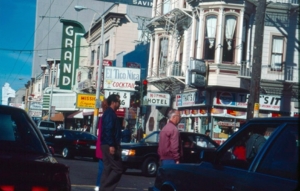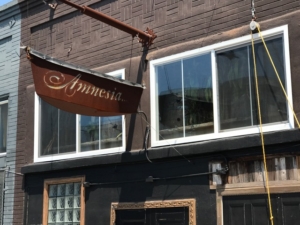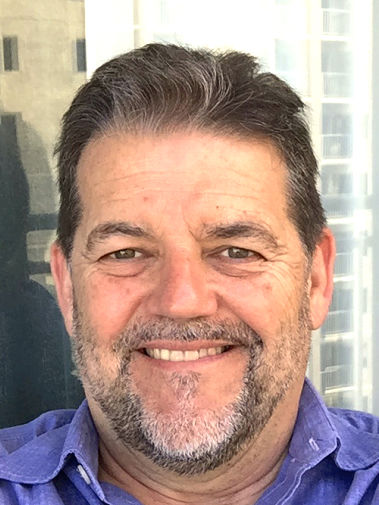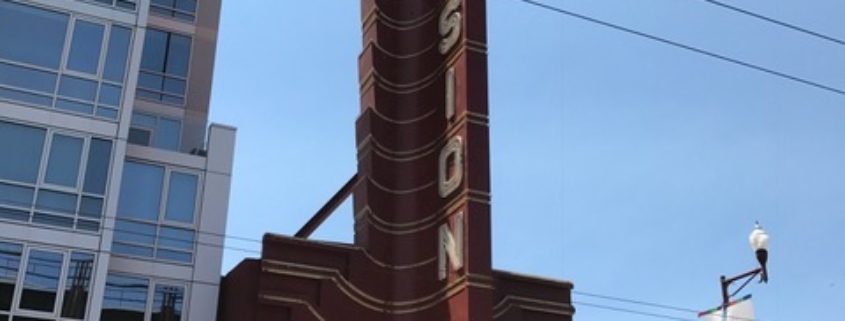Soul Music
At around eleven p.m. on a Friday, I descend the stairs into the Cigar Bar, a bar where you can order a quick drink or pick up a cigar. You can’t smoke inside but you can in the open-air courtyard separating the bar from the dance floor on the opposite side, where a live salsa band is playing. I weave my way across the courtyard through the thick smoke and crowded tables until I push open the doors into the other room.
The sound of drums, the bass and the familiar clave beat echoes in the courtyard. The singer is belting out La Banda, a song made popular by Puerto Rican icon Hector Lavoe back in the early seventies when New York salsa reigned the groove and the swing of Afro-Cuban music all over the planet and all over San Francisco’s Mission District.
I remember those times, being swept by the magic of it, dancing to songs like Pedro Navaja. I would slide my hand around the girl’s waist. She would place one hand on my shoulder. I’d hold her other hand in mine and we would move to the beat, always to the beat. We sang the lyrics to each other because those words and that sound reached us.
* * *
I drop two dollars in the clear jar sitting on the narrow coat check counter and hand my sport coat to the young Filipino woman on the other side. She smiles and hands me a numbered ticket. I stroll to the edge of the floor mouthing the words to the song because this is Afro-Cuban music: it’s my soul music. My body feels lighter when I hear it, as if lifted elsewhere, to the sounds that brought me life, to the Havana that I remember.
I see couples dancing half drunk, falling into each other, taking up more space than they should. I see an Asian couple. They are both staring down at their feet counting their steps, trying to remember what they learned during the early evening salsa lesson. Over on the far side of the floor I see this white guy and woman moving as if they were jumping rope to the music. They’re not counting anything but they seem to be having a good time.
Then there is the middle aged black dude, too cool for his own good, looking like he’s working a hula-hoop in slow motion. He’s dancing with a Filipino woman wearing a tight sequined dress and tall heels. She gyrates her hips slightly and doesn’t seem to want to mess up her hair. An Indian guy holds his drink in one hand and spins his partner with the other like a top, almost launching her right off the dance floor. The idea that there is a beat to follow seems to elude some of them.
I suppose I should feel proud when I see them dancing. Proud that my music has reached so far and has become such a phenomenon, that it leapt across cultural and geographical boundaries. But they have no idea what the words to the song mean. Pride is not what I feel. Instead there is a heaviness to my legs that anchors me to the floor. My face feels flush and my chest tightens as the music is drowned by memories of a different time, of a different San Francisco.
* * *

In the seventies, neighborhood garage parties with red or black lights were also crowded, smoky and yes, we all drank then too. But like the subtitle to Fania All Stars’ breakthrough 1971 album Our Latin Thing, it was indeed nuestra cosa, our thing. Couples swayed as if riding the same wave, mirroring each other’s steps. The bass, the drums and the tat-tat-tat, tat-tat of the clave steadied the rhythms while the horns burst out the melody and the vocals kept us in the groove, not just with the music but also with each other. There was ease to it all, the ease that came with the familiar. Our moves felt inevitable, like breathing.
Here at Cigar Bar, the music seems to be background noise to the dancers. It seems as if only alcohol—or maybe wanting to appropriate our culture as their own—spurs them to the dance floor. This type of cultural appropriation is not that different from what I see these days in the Mission, my old neighborhood. What used to be a predominantly Latino neighborhood is now host to a proliferation of new residential condo buildings, unaffordable to the working class. The new buildings are named with words like Vida (Life): as if baptizing them with Spanish words will somehow preserve the heritage of the neighborhood.
The past is being re-written by these modern day Columbuses—developers and the rich settlers who inhabit their new buildings. I’m reminded of this when I see a bar called “Amnesia,” or “The Alamo Draft House,” which now occupies the old New Mission Theater. They kept the marquee sign from the original theater because it was deemed to be historic, since it held some level of architectural significance. The Crown Theater across the street used to alternate Mexican movies with American films. It housed innumerable memories for many of us, but it holds no such historical significance to them. It too, is now gone.
The new structures replace old stores, like Newberry’s on 23rd and Mission. I used to buy shoes there as a kid. There were two large bins on the sidewalk in front of the store; one filled with left-footed shoes, the other with right-footed shoes. If you found one you liked which fit, you needed to rifle through the other bin to find the match. It was always fun to barter if you happened to find someone else holding the matching shoe. Although those memories remain, the landscape and the people who evoke them are largely gone.
* * *

Amnesia on Valencia Street
I don’t have to pair my left and my right shoes anymore. These days I can afford to buy them together, at places like Nordstrom’s, and they’re actually made of leather. But I can’t forget, because there are those who still have to sort through sidewalk bins, those who, like me, came here imagining a future for the first time, albeit uncertain. Today it’d be places like Newberry’s where ICE would come calling to complete their quota of immigrant detainees, like they did not too long ago when they raided a family center in the Mission, or as they have done at countless other places throughout the country. We didn’t worry about raids as much back then when we still came to this country chasing the illusion of a dream, and felt safe doing it.
Maybe tonight in this place, what we’re really witnessing is a case of acculturation. We, armed with our music and our ways, bring together a community. We have things in common after all. We all understand progress. Immigrants by definition seek to improve their lives. We seek progress but understand that progress is not without sacrifice. The question is where do we draw the line? Decimating entire communities in the name of profit is not progress. It erodes the foundation that binds us as a society. A bigger question is, who draws that line? If not us, then who?
I don’t mind if the white couple jumps. I don’t mind that the Asians mark their steps, or that the black dude thinks he looks cool, or if the Indian guy throws the girl off the dance floor. They can dance to the music however they choose. I’m okay with it. They do not need my permission. It’s hypocritical of me to talk about community if that community only allows a certain kind. Others would do well to consider that before tearing down the next building. In the end, I know who I am and where I come from. I wonder if they do. I’ve already drawn my line. This is my Vida and no one is going to build any condos where I’m standing.
* * *
The song ends and everyone applauds. The crowd disperses. I tap the jump rope woman on the shoulder as she walks past me. “Would you like to dance?” I ask.
“Sure,” she says.
I take hold of her hand and lead her to the dance floor. I slide my right hand around her waist. She smiles as I guide her left hand onto my shoulder. The music starts. I mouth the words to the song. And we dance.
 Jesus Francisco Sierra is currently working towards his MFA in Fiction at Antioch University Los Angeles. He emigrated from Cuba in 1969 and grew up in San Francisco’s Mission District. He still resides in the San Francisco Bay Area. Although he has been a lifelong writer and storyteller, he makes a living as a structural engineer. His inspiration, and his most supportive audience, are his adult daughter and son. He is fascinated by how transitions, both sought and imposed, have the power to either awaken or suppress the spirit. His work has previously been published in Marathon Literary Review and The Acentos Review.
Jesus Francisco Sierra is currently working towards his MFA in Fiction at Antioch University Los Angeles. He emigrated from Cuba in 1969 and grew up in San Francisco’s Mission District. He still resides in the San Francisco Bay Area. Although he has been a lifelong writer and storyteller, he makes a living as a structural engineer. His inspiration, and his most supportive audience, are his adult daughter and son. He is fascinated by how transitions, both sought and imposed, have the power to either awaken or suppress the spirit. His work has previously been published in Marathon Literary Review and The Acentos Review.





